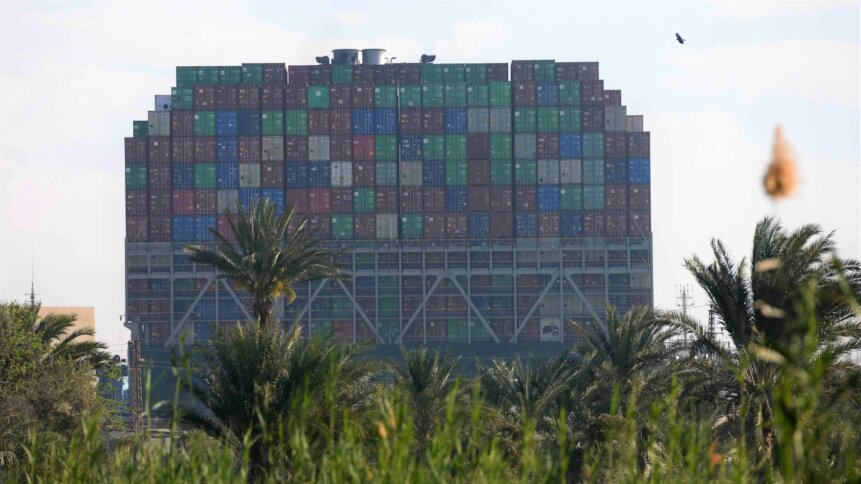AI digests supply chain risk

Understanding supply chain risk has always been important, but recent events have pushed the value of this knowledge to new heights. The global pandemic, the ongoing conflict in Ukraine, and a vessel named Ever Given getting stuck in the mud in the Suez Canal – to list a few major shocks to worldwide supplies – have sent analysts scrambling for insight. In 2022, the Federal Reserve Bank of New York created what it dubbed ‘The Global Supply Chain Pressure Index’, which uses transportation and manufacturing data to make sense of current trends. The Economist likes to follow container-freight prices – for example, using Freightos data. And some experts like to count vessels queuing outside major ports using shipping transponder coordinates and satellite imagery. But these indicators only provide snapshots; what if you could take things further and gather a much more granular view of supply chain risk and discover how it applies at a company level?
Data-driven framework
For nearly a decade, riskmethods – a SaaS firm with offices in Germany, Poland, and the US – has been using artificial intelligence (AI) and leveraging gains in natural language processing to gather vast amounts of supply chain data, extract key details, and generate real-time insight. “We’re helping firms to understand risk in a common framework and build digital twins of supply chains,” Constantine Limberakis of riskmethods, told TechHQ.
The exercise involves digesting daily reporting from around 300,000 news sources, presented in over 15 different languages, and currently, the searchable resource has examined more than 500 million articles across 1 million customer and supplier sites. Other records include cybersecurity information, sustainability details, and financial reporting such as data on firms that have recently filed for bankruptcy. And while the scale of the task is impressive, the secret sauce is being able to tune the machine learning algorithms so that they are able to dial down the noise and isolate the signals that matter to companies.
Using the tools, firms can better understand where upcoming risks in their global supply chains may be lurking and receive alerts when breaking news comes on the radar. Natural language processing has driven huge improvements in speech recognition that’s helped clinicians to save as much as two hours per person per shift. And advances in AI are now helping companies to manage their global supply chain risk. “Firms can examine a long tail of indicators to provide further insight,” adds Limberakis.
Bullwhips and aftershocks
What makes supply chains particularly difficult to keep on top off is a phenomenon known as the ‘bullwhip effect’, where trigger events become amplified and contribute to exaggerated swings in supply and demand. Another way of picturing supply chain dynamics, is to think of the aftershocks that follow an earthquake. Both analogies point to the complexity of understanding supply chain risk and highlight that even firms feeling confident today need to be able to anticipate and react to future disruptions. But the discussion doesn’t stop there.
Companies need to be up to speed on a wide range of issues, which includes environmental, social and corporate governance (ESG). Germany’s Supply Chain Due Diligence Act comes into force in 2023 (for companies with a local presence of 3000 employees – a threshold that drops to 1000 employees in 2024). The law requires firms to ‘make reasonable efforts to ensure that no violations of human rights occur within their own business or within their supply chain’, and companies that don’t comply face large fines that could reach as high as 2% of average annual turnover. To determine their risk profile, firms will need to review their supply chains in detail – a task that’s usefully augmented with AI-based tools, which make light work of the research required and can keep watch for any changes.
Building resilience
Today, resilience doesn’t just mean having a diverse supply chain. Organizations need to have data at their fingertips to show that they are behaving responsibly to their staff, customers, and the planet. And it’s not just to satisfy regulators – investors and clients are becoming more interested in sustainability issues too. “People are asking more from suppliers beyond price and delivery – carbon footprint is now a buying criteria,” Mike Zamis of Sphera – a provider of sustainability and ESG reporting tools – told TechHQ.
Zamis points out that progressive organizations now have a monthly ESG close, where they report on their environmental, social, and corporate governance alongside conventional bookkeeping activities. But as regulatory frameworks coalesce and become more widespread globally, such behaviour will become mainstream as legislators leave companies in no doubt about what good corporate citizenship looks like.
Firms need to have a strong grasp of what’s happening both within their own four walls and further afield, which explains why it made sense for riskmethods and Sphera to join forces. “For the last 10 years, riskmethods has been empowering businesses to master supply chain risk and create reliable supply networks,” said Heiko Schwarz, founder and CEO of riskmethods. “Adding our advanced AI and machine-learning SCRM software solution to Sphera’s product portfolio will enable us to further our reach across the globe and help even more customers manage supply chain risk.”









